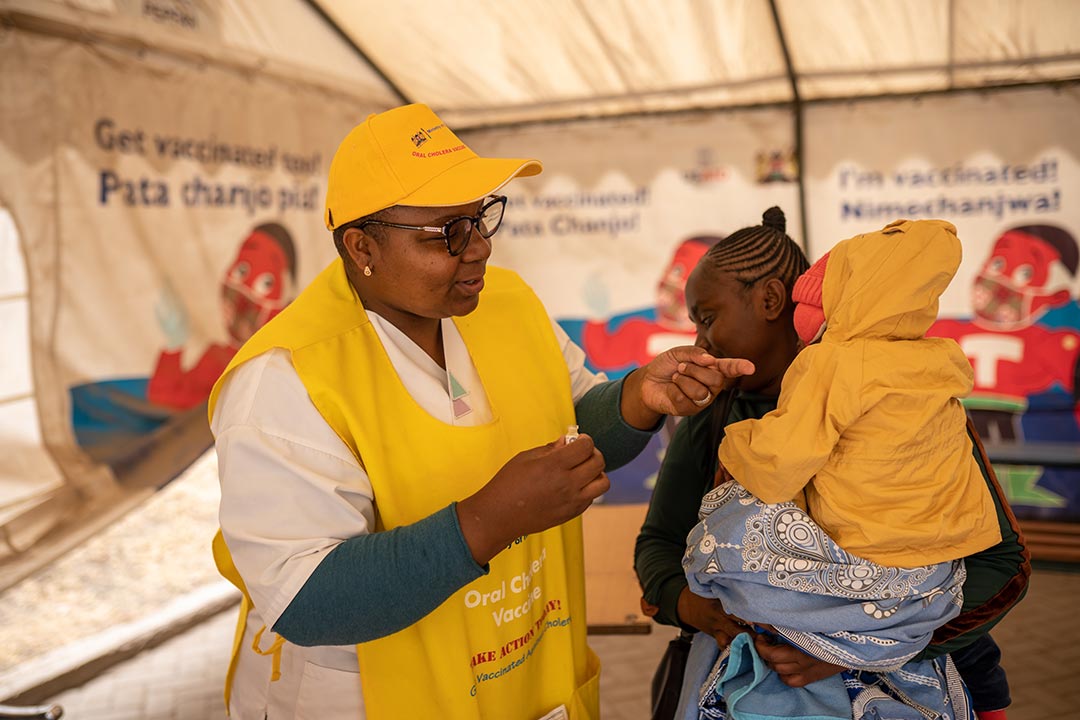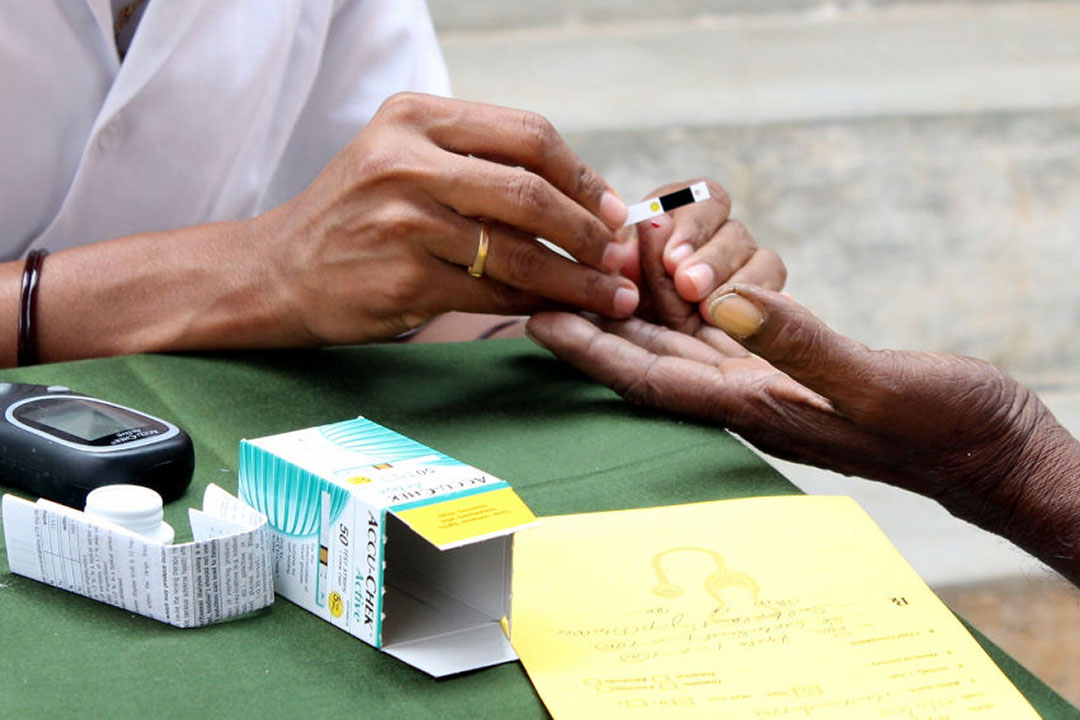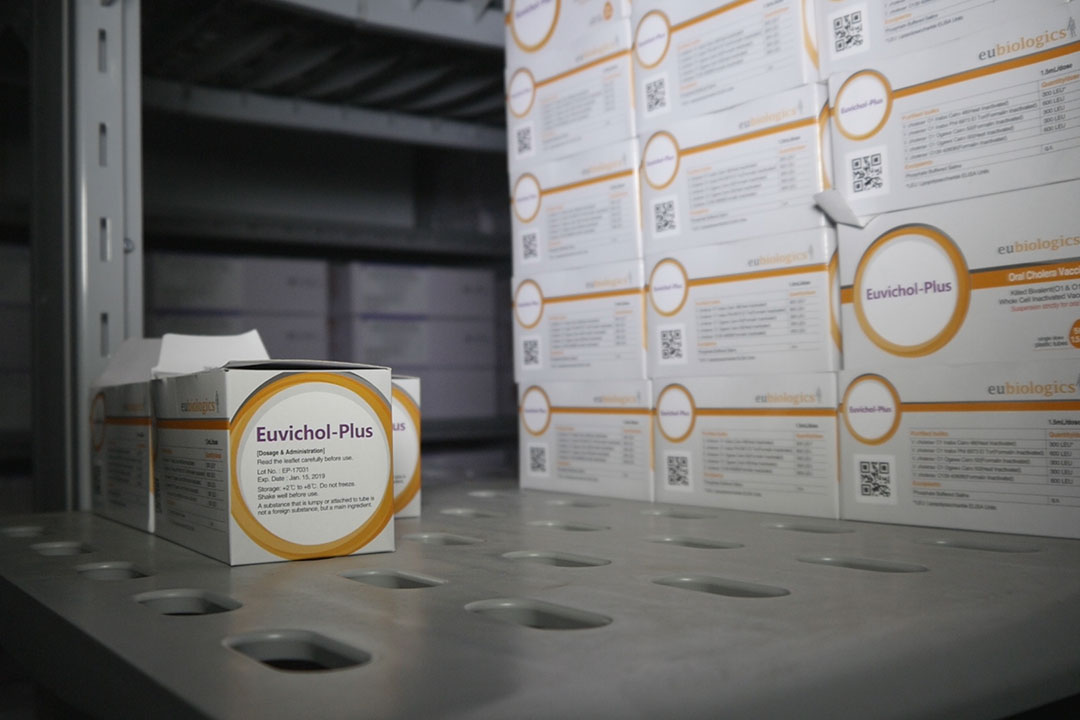New drug offers hope for reducing maternal mortality in Kenya
- 12 September 2024
- 6 min read
- by Muthoki Kithanze

Having soaked up great quantities of advice from friends who had given birth before, Gladys Musenya, 23, could envision the sequence of her delivery.
First, she would get a wave of contractions that would vary in intensity. Then she would push out her baby girl. Everything, she imagined, would fall effortlessly into place.
But her delivery in August did not follow this anticipated chronology of events. Minutes after she gave birth, having fought through unimaginable pain during labour, she was in the operating theatre fighting for her life.
“One minute, I was in the delivery room. The next, I was in the theatre in a complete daze. Up to now I cannot account for the hours that followed after my baby girl was born,” said Musenya, a resident of Makueni County in southern Kenya.
Musenya had developed a postpartum hemorrhage, the leading cause of maternal mortality worldwide.
Postpartum haemorrhage (PPH) is conventionally defined as a blood loss of 500 ml or more within 24 hours of birth, according to the World Health Organization (WHO). In Kenya, PPH accounts for over 40 % of maternal deaths.
"A baby born to a mother who dies during childbirth is 35 times more likely to die before reaching six months. For surviving mothers, complications such as the removal of the uterus or extended hospital stays can arise."
- Michael Mwiti, project lead AMPLI-PPHI
Lilian Mumbua, a midwife nurse at Makueni Referral Hospital who attended to Musenya, explains to VaccinesWork that the baby’s large weight and shoulder dystocia – a condition that happens when one or both of your baby’s shoulders get stuck during vaginal delivery – caused a cervical tear that led to bleeding.
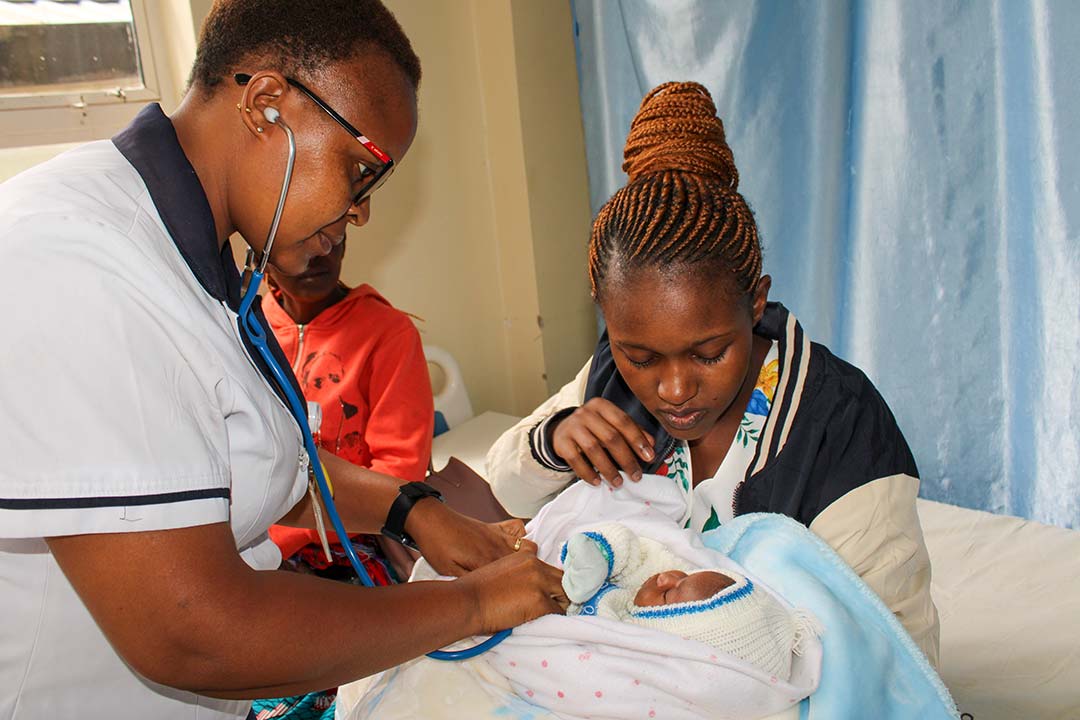
Credit: Muthoki Kithanze
“Her condition was life-threatening, and had the team in the labour ward not stepped in with the latest set of PPH interventions, then things would have gone sideways,” she said, her voice trailing off at the thought.
New interventions
In January 2024, Makueni Referral Hospital adopted the use of heat-stable carbetocin, a WHO-recommended drug for postpartum haemorrhage.
Before that, oxytocin was the preferred drug for preventing and treating PPH. However, like many vaccines, oxytocin requires an unbroken “cold chain” to maintain a temperature of 2–8°C. That proved hard to meet in many facilities, which either experienced power outages, or were not connected to an electricity grid at all, experts shared. Research has shown that refrigeration inconsistencies can result in the drug becoming substandard.
Have you read?
“We have noticed a decrease in severe postpartum haemorrhage (PPH) cases since we started using carbetocin. For example, even though Musenya experienced bleeding after receiving carbetocin, the amount of blood lost was significantly lower, and she did not need a transfusion,” explained Mumbua, who has witnessed many PPH cases in the maternity ward over the years.
After four days of care, Musenya and her baby girl were discharged with instructions to adhere to medication and eat foods that would boost her blood levels.
A lurking risk for all pregnant mothers
Christine Wanjiru, who manages nursing services at the mother and child wing of the Makueni Referral Hospital, explains that all pregnant women are at a risk of developing postpartum haemorrhage.
"However, women who have a history of PPH, a large baby (macrosomic baby), have had multiple children, or those with low blood count are at an elevated risk," she said.
Wanjiru admits that historically there has been a significant knowledge gap on how to prevent, detect and treat PPH among skilled birth attendants in hospitals across the county. That meant, she said, that medical teams wasted a lot of time on “guesswork that cost mothers”.
“There was no systemic way of doing things. For instance, we used visual estimation to measure blood loss, which means we under-estimated volume. Secondly, we did not have a standard measure of administering uterotonics,” she said, meaning drugs which cause the uterus to contract.
Now the facility uses a calibrated blood-collection drape to accurately measure blood loss, alongside the use of carbetocin to control postpartum haemorrhage. Additionally, the medical team is now operating a WHO-recommended treatment response called as the E-MOTIVE bundle.
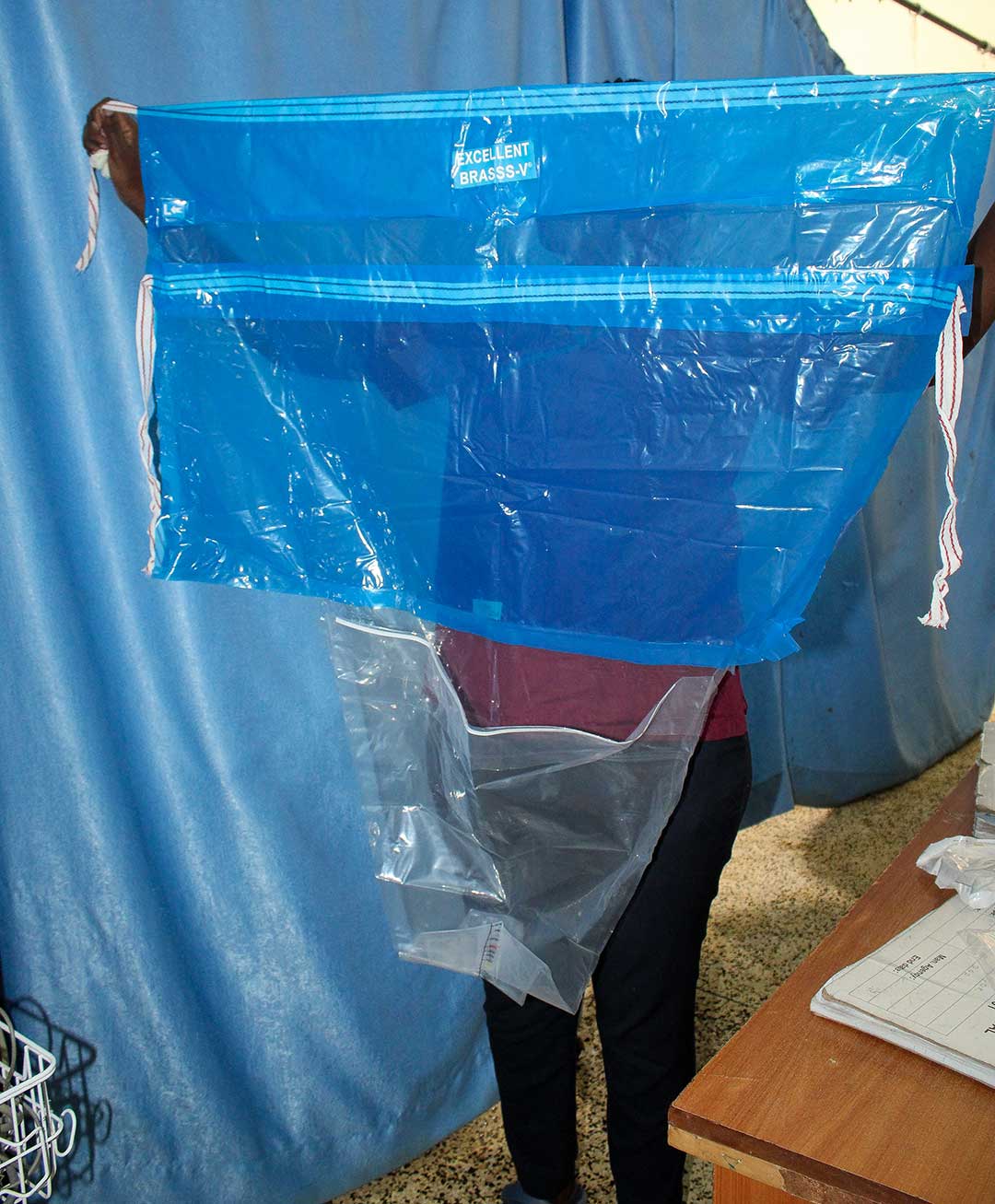
Credit: Muthoki Kithanze
"The E-MOTIVE bundle includes uterine massage, medicines to contract the womb and stop the bleeding, intravenous fluid administration, an examination aspect, and when the case is beyond you, escalation for further care,” she explained.
This cluster of interventions, along with capacity-building for health care providers in the maternity ward, are being implemented in 36 hospitals in Makueni County, which has a population of more than 0.9 million people.
The floors are dry
As change swept through the referral hospital’s maternity ward, cleaners were the first people to notice. "The cleaners began to ask what happened to all the blood we used to clean on the floors and the bed linen,” Wanjiru said.
The hospital cleaners nicknamed the new medicine “kausha” in Swahili, which translates to 'dry' in English.
Now, she says, "the cases of PPH we are witnessing are not due to a lack of uterine contraction (which is taken care of by carbetocin), but rather due to cervical or vaginal tears, retention of conception products such as the placenta, or sometimes when a mother has blood disorders."
She also mentioned that the decrease in transfusion cases has reduced the demand for blood and blood products. Although the hospital cannot provide substantial data to reflect the change, Wanjiru said they have not lost a mother to PPH since 2022 – just about the time they began to change how they do things.
These interventions have been implemented as part of a project called Accelerating Measurable Progress and Leveraging Investment for PPH Impact (AMPLI-PPHI). The organisations involved in this project include Jhpiego, Figo (Kenya Obstetrical and Gynaecological Society) and PATH.
The programme, which began in 2022 and will conclude in 2026, aims to speed up the adoption of WHO-recommended interventions for the prevention of PPH.
Jhpiego has supported Makueni Referral Hospital with its first consignment of carbetocin and it was also involved in the development of policies and regulations that availed the drug for use across all levels of hospitals.
“The cost of carbetocin was high where one dose was going for 540 Kenyan shillings, but after a price negotiation a dose will now cost 90 shillings for the public sector,” said Michael Mwiti, project lead, AMPLI-PPHI.
Kenya Medical Supplies Authority (KEMSA)confirmed that so far 366,000 doses have already been procured and 19,390 doses have been issued to health care facilities in 14 counties across the country.
Mwiti stressed that PPH has a profound impact, calling it a tragedy with far-reaching consequences.
"A baby born to a mother who dies during childbirth is 35 times more likely to die before reaching six months. For surviving mothers, complications such as the removal of the uterus or extended hospital stays can arise," he said.
He also emphasised that oxytocin remains useful for the treatment of PPH, with the only difference being that hospitals will now require it in smaller doses.
No choice
Dr Paul Musila, County Executive Committee Member of the Department of Health Services in Makueni, said, "We have no choice but to continue with the programme even after our partnership comes to an end. We have set funds aside to procure drapes when they run out,” he said while urging other counties to adopt the interventions.

Credit: Muthoki Kithanze
The UN’s Sustainable Development Goal 3.1 aims to reduce the global maternal mortality ratio (MMR) to less than 70 per 100,000 live births by 2030. As of 2019, at the last census, Kenya was still off-target with an MMR of 355. according to the 2019 population census. Survivor Musenya hopes that trend is reversing. "What I went through was scary, but I am alive. I hope other pregnant women will get the same care as I did," she said.
More from Muthoki Kithanze
Recommended for you

